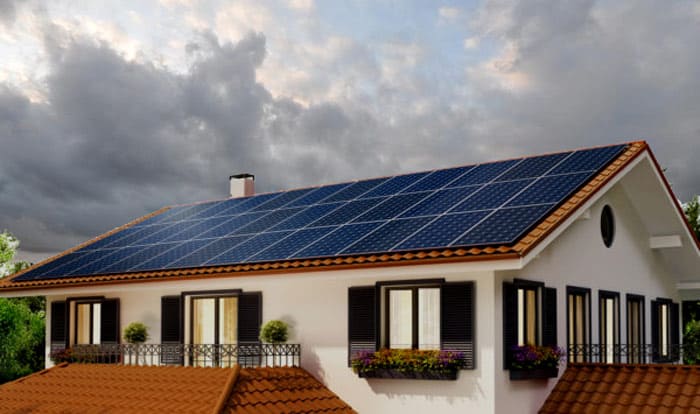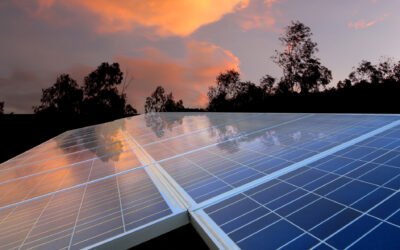Unlocking Efficiency: The Impact of Commercial Solar Panels
In the modern world, where sustainability and cost-effectiveness are paramount concerns for businesses, the adoption of renewable energy sources has gained significant momentum. Among these sources, solar power stands out as a reliable and efficient option, especially in the commercial sector. Commercial solar panels, in particular, have revolutionised the way businesses harness solar energy to power their operations. In this article, we delve deep into the efficiency of commercial solar panels, exploring their benefits, technology, and the factors influencing their performance.
The Evolution of Commercial Solar Panels:
Commercial solar panels have come a long way since their inception. Over the past few decades, advancements in photovoltaic technology have significantly enhanced their efficiency and reliability. Here’s a brief overview of the key stages in the evolution of commercial solar panels:
- Early Solar Cells (1950s-1960s): The first solar cells were developed in the 1950s and were primarily used in space applications. These early cells had very low efficiency, often less than 10%.
- Silicon Solar Cells (1970s-1980s): The 1970s saw the emergence of silicon-based solar cells, which marked a significant improvement in efficiency. These cells had efficiencies in the range of 10% to 15%.
- Thin-Film Technology (1990s-2000s): Thin-film solar panels, made from materials like amorphous silicon and cadmium telluride, entered the market in the 1990s. They were more cost-effective but had slightly lower efficiencies compared to silicon-based cells.
- Monocrystalline and Polycrystalline Panels (2000s-present): In recent years, monocrystalline and polycrystalline solar panels have become the standard for commercial installations. These panels have efficiencies ranging from 15% to 22% or more, depending on the quality and technology used.
Understanding Efficiency Metrics:
To evaluate the efficiency of commercial solar panels, it’s essential to understand the key metrics used in the industry:
- Conversion Efficiency: This metric measures the percentage of sunlight that a solar panel can convert into electricity. Higher conversion efficiency means a panel can generate more electricity for a given amount of sunlight.
- Fill Factor (FF): The fill factor indicates how effectively a solar panel converts sunlight into electricity by taking into account the maximum power point and the voltage and current at that point. A higher fill factor means better performance.
- Temperature Coefficient: Solar panels are less efficient at high temperatures. The temperature coefficient quantifies how much a panel’s efficiency drops as the temperature rises. Panels with lower temperature coefficients are more efficient in hot climates.
- Degradation Rate: Over time, solar panels gradually lose efficiency. The degradation rate represents the annual percentage decrease in a panel’s efficiency. High-quality panels have lower degradation rates.
Factors Influencing Efficiency:
Several factors influence the efficiency of commercial solar panels:
- Quality of Solar Cells: The type and quality of solar cells used in a panel play a significant role in its efficiency. Monocrystalline cells generally offer higher efficiency than polycrystalline cells.
- Orientation and Tilt: The direction a solar panel faces and its tilt angle affect its efficiency. Panels should be oriented to maximise exposure to sunlight, typically facing south in the northern hemisphere and north in the southern hemisphere.
- Shading: Even partial shading of solar panels can significantly reduce their efficiency. It’s crucial to ensure that panels remain unshaded throughout the day.
- Dirt and Dust: Accumulation of dirt and dust on the surface of panels can reduce their efficiency. Regular cleaning and maintenance are essential to optimise performance.
- Temperature: High temperatures can lead to reduced efficiency. Proper ventilation and cooling mechanisms can help mitigate this issue.
- Inverter Efficiency: The efficiency of the inverter, which converts DC electricity generated by solar panels into AC electricity for use in buildings, also impacts the overall system efficiency.
Benefits of Commercial Solar Panels:
Commercial solar panels offer a wide range of benefits that make them a compelling choice for businesses:
- Cost Savings: One of the most significant advantages of commercial solar panels is cost savings. By generating their electricity, businesses can reduce or even eliminate their reliance on grid power, leading to lower energy bills.
- Environmental Impact: Solar power is a clean and renewable energy source, which means using commercial solar panels reduces a business’s carbon footprint and helps combat climate change.
- Energy Independence: Commercial solar panels provide businesses with energy independence and resilience. They are less vulnerable to energy price fluctuations and power outages.
- Incentives and Tax Benefits: Many governments and local authorities offer incentives and tax benefits to encourage the adoption of solar power, making it even more cost-effective for businesses.
- Brand Image: Businesses that invest in renewable energy and sustainability projects often enjoy a more positive brand image, which can attract environmentally conscious customers and partners.
- Long-Term Investment: Solar panels have a long lifespan, often exceeding 25 years, making them a sound long-term investment for businesses.
Case Studies:
To illustrate the efficiency and benefits of commercial solar panels, let’s look at a few real-world case studies:
- Walmart: The retail giant Walmart has committed to using 100% renewable energy. They have installed solar panels on many of their stores and distribution centres, significantly reducing their energy costs.
- Apple Inc.: Apple has made substantial investments in solar power, including a 1300-acre solar farm in California. They are working towards making all their global operations carbon-neutral.
- Amazon: Amazon has numerous solar installations across its fulfilment centres and data centres. These projects not only save costs but also align with their sustainability goals.
More Locally in Queensland:
- Aria Property Group:
Aria Property Group, a leading property developer in Queensland, has made significant strides in sustainability by integrating solar power into its developments. They have incorporated solar panels into several of their residential and commercial properties, including the iconic “No.1 Grant Avenue” apartment building in Southport, Gold Coast. This building features a rooftop solar array that generates clean energy to power common areas and reduce the carbon footprint of its residents.
Aria Property Group’s commitment to sustainability and the use of commercial solar panels not only aligns with their values but also serves as a selling point for environmentally conscious buyers and tenants. It demonstrates how solar power can be seamlessly integrated into urban development projects to benefit both the environment and the bottom line. - Super Retail Group:
Super Retail Group, an Australian retail company headquartered in Queensland, has shown a dedication to renewable energy and sustainability through its adoption of commercial solar panels. The company operates popular retail brands like Supercheap Auto, Rebel, BCF (Boating, Camping, Fishing), and Macpac.
Super Retail Group has installed extensive solar panel systems on the roofs of several of its stores throughout Queensland. These solar arrays help power the stores’ operations and reduce electricity costs. One of their notable installations is at the Rebel Sport store in North Lakes, which features a substantial rooftop solar array that generates a significant portion of the store’s energy needs.
By harnessing the power of the Queensland sun, Super Retail Group not only reduces its operating expenses but also demonstrates corporate responsibility and environmental stewardship. These efforts resonate with customers who value sustainability and contribute to the company’s positive brand image.
Commercial solar panels have evolved into highly efficient and cost-effective solutions for businesses seeking to reduce their energy costs, lower their environmental impact, and secure a reliable energy source. With advancements in technology and increasing awareness of the benefits, the adoption of commercial solar panels is set to continue growing.
Efficiency is a critical aspect of any solar panel installation, and businesses must consider factors such as the quality of solar cells, orientation, shading, and maintenance to maximise their benefits. As the world moves towards a more sustainable future, commercial solar panels are poised to play a central role in powering businesses efficiently and responsibly.
Related Posts

Solar Power and Sunlight: What Happens On Cloudy Days?Reduce Carbon Emissions With Solar Power
It’s without question that solar panels work their best when in direct exposure to the sun. In fact, the beauty

Reduce Carbon Emissions With Solar Power
With many every-day living costs on the rise for home and business owners, investing in solar panels is a clever

Rooftop Rumours: Busting the Top Six Myths about Solar Power
1. As technology improves, solar panels will become cheaper, so I should wait to buy mine While in recent years,
